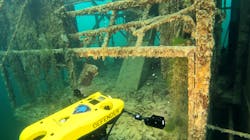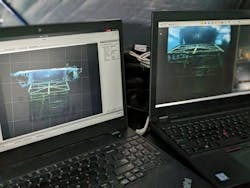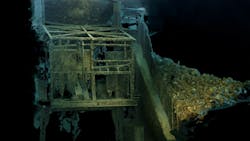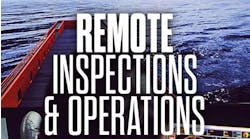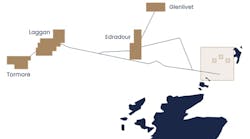Editor's note: This story first appeared in the May-June 2023 issue of Offshore magazine as part of the Remote Inspections & Operations Special Report.
By Chris Gilson and Patricia Sestari, Voyis Imaging
Subsea inspection operations are an intricate task that have historically required specialized knowledge and complex technology. ROVs are a critical tool for underwater exploration, inspection and maintenance, but their effectiveness is driven by the quality of their vision systems. Current ROV cameras prioritize vehicle piloting and situational awareness, which are the most immediate needs of the operators. However, when both piloting and inspection confidence can be significantly enhanced with 3D information, the industry should seek to adopt new approaches.
Voyis, a company specializing in underwater optical imaging and 3D modeling, has advanced ROV vision systems with new computer vision technology. The goal was to create a vision platform that could capture both low-latency enhanced video for piloting while simultaneously capturing high-quality stills images for real-time 3D modeling. The company sought a solution that could generate incredible 3D reconstructions in real time without specialized technicians or expensive third-party processing.
By leveraging edge computing, Voyis' Discovery Vision System streams both crisp 4K piloting video and 3D point cloud data for complete situational awareness, addressing the compromise between piloting cameras and inspection cameras. Piloting cameras prioritize low-latency video, at the expense of the image data required for 3D modeling. Conversely, inspection cameras prioritize image data at the expense of piloting effectiveness, limited by their higher latency and a smaller field of view.
Case study
The system was easily integrated using the vehicle’s existing power and ethernet infrastructure, rapidly deploying this new capability on the small platform. The Nova Mini lights provided high-intensity, uniform lighting that drastically improved the quality and clarity of the images compared to the standard piloting camera. In a single day, the Voyis team was able to effectively integrate and operationalize the Discovery in a new environment to acquire an accurate 3D reconstruction of a subsea asset.
The success of the Discovery Vision System highlights its potential to revolutionize subsea inspections and ROV operations, a capability available for small platforms using the compact 300-m Discovery Camera and on large work class ROVs with the 4,000-m Discovery Stereo. By employing edge computing to capture high-quality stills images in tandem with low-latency video, it achieves a vision system without comprise. It is now possible for every subsea vehicle to see the depths like the surface is seen.
